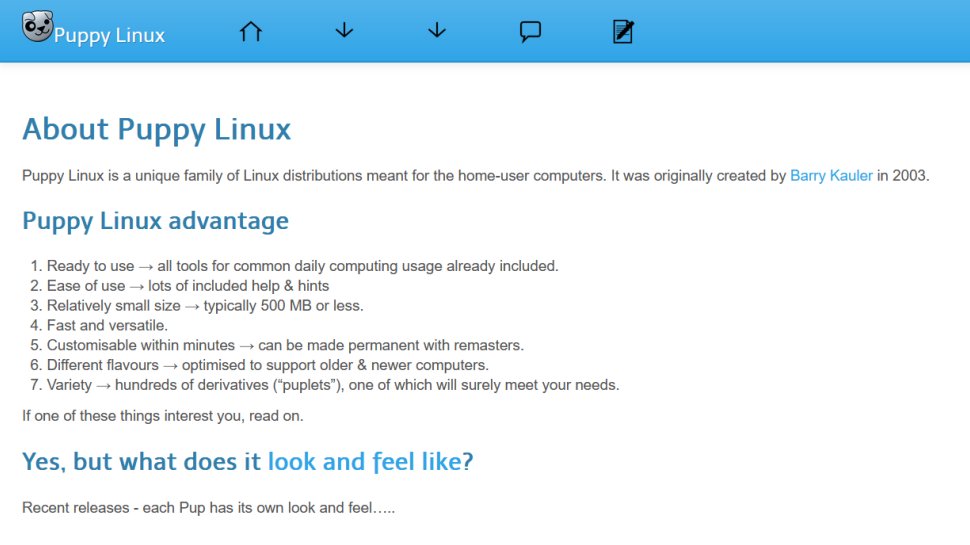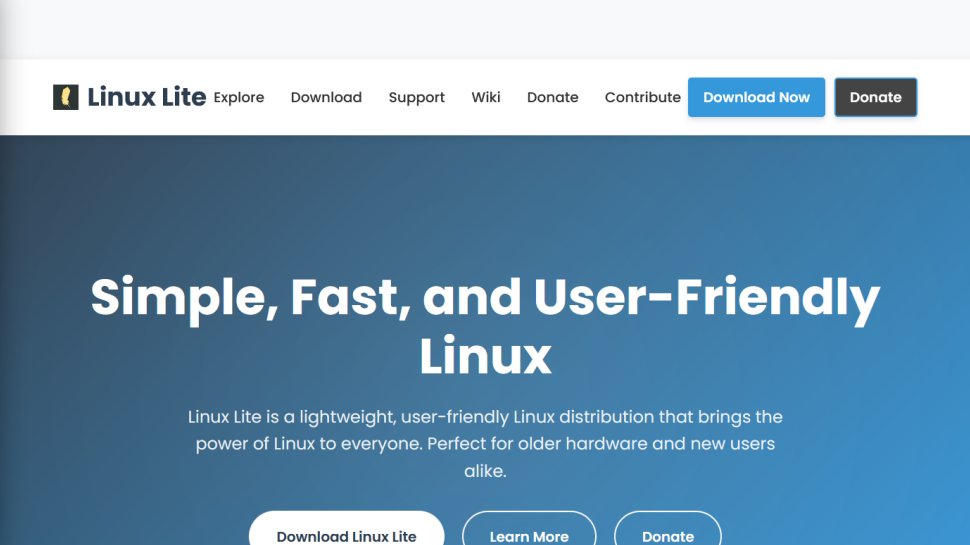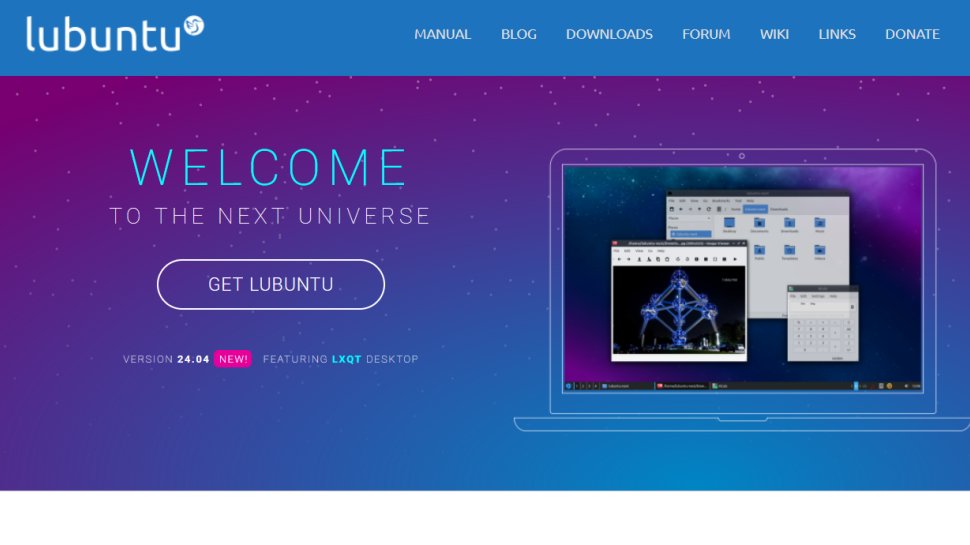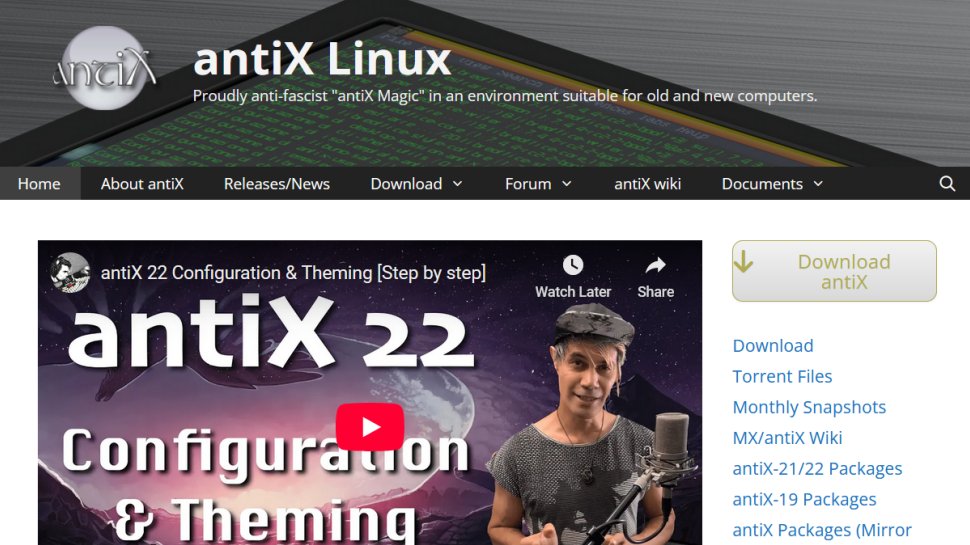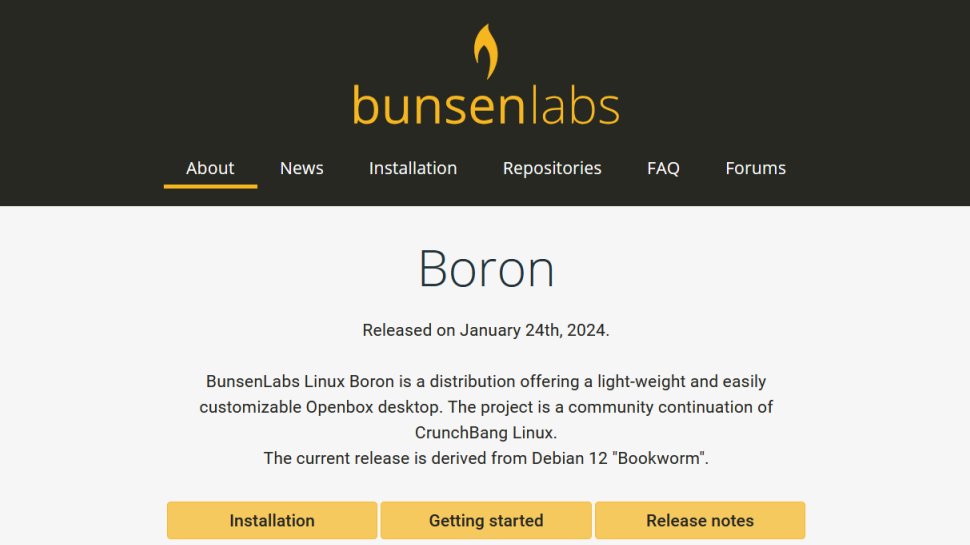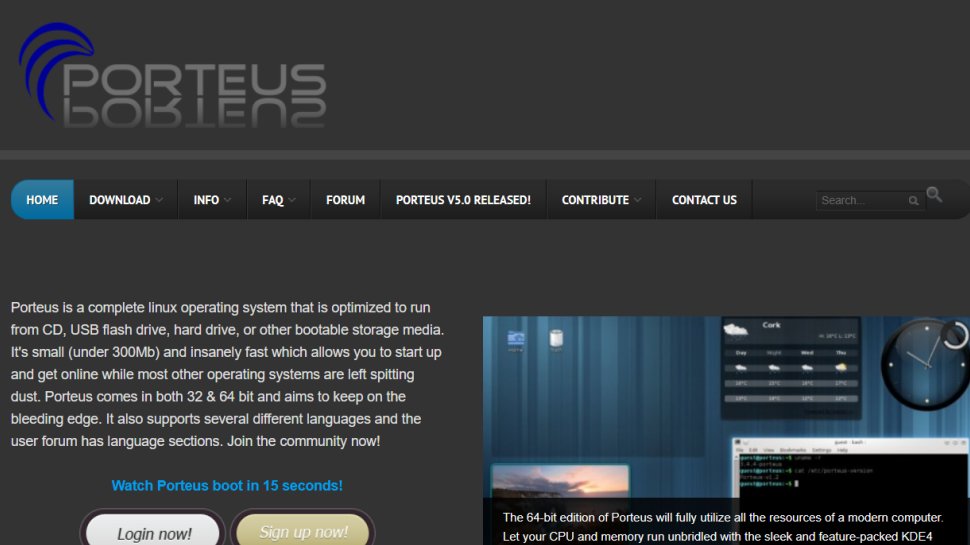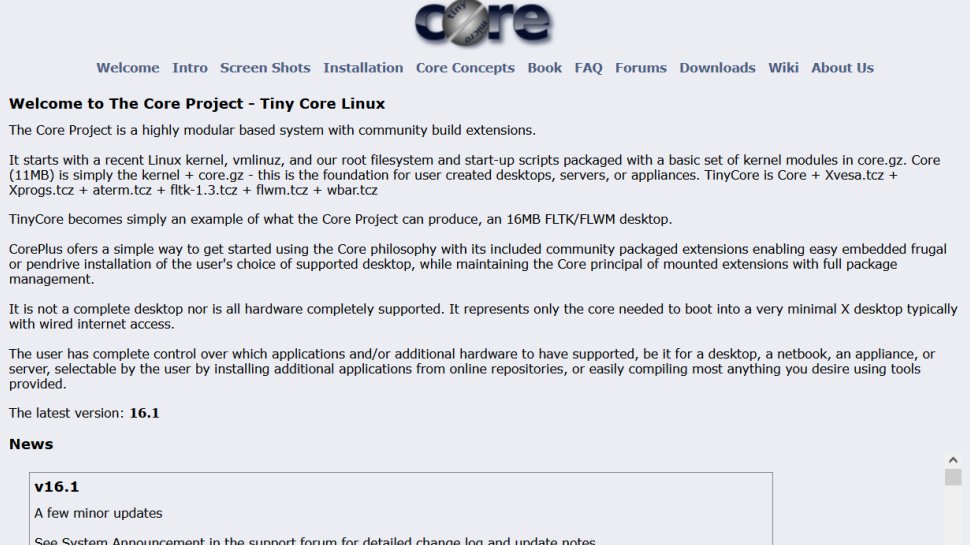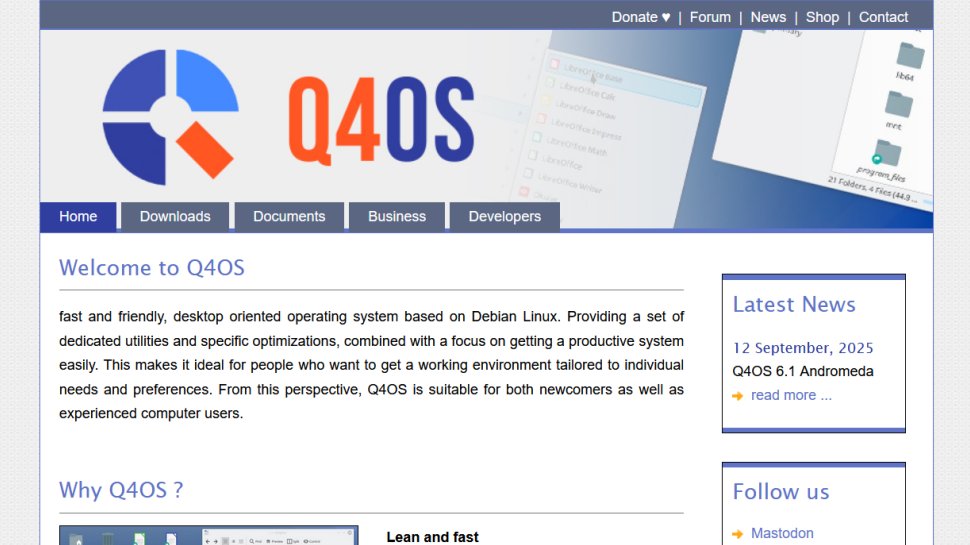Best lightweight Linux distro of 2025
Stripped-down versions of Linux, especially for older computers.

We list the best lightweight Linux distros, to make it simple and easy to run a more stripped-down version of Linux, especially for older computers.
This means you shouldn't expect these distros to provide blistering performance, but they can allow you to bring an old computer or two back to life - and use - as a dedicated Linux machine.
Such a computer setup could be good for a beginner to learn Linux on, or for more a seasoned user to have as a dedicated programming PC or even just a second PC for general use.
We’ve tested the Linux distros below extensively and looked at factors such as the hardware requirements, documentation, simplicity of configuration and maintenance, custom apps that come with it, and support for multi booting. We also considered whether the distros made it easy for Windows users to migrate to Linux, among other things.
Want to learn Linux? We've featured the best Linux online courses.
The best lightweight Linux distros of 2025 in full:
Why you can trust TechRadar
Best lightweight Linux distro overall
1. Puppy Linux
Reasons to buy
Reasons to avoid
Puppy Linux is one of the oldest lightweight distros out there. The project has been turning out slim, sleek and fast distros for over 15 years now, and offers different versions depending on the underlying environment. FossaPup64 9.5 is based on Ubuntu Focal Fossa (20.04). The more recent S15Pup64 22.12 version of Puppy Linux (pictured) is based on Slackware64 15.0.
The distro is full of apps, belying its small size – some are quite unconventional, such as Homebank which helps you manage your finances, or GdMap which allows you to graphically map out your disks. There are also graphical tools to manage Samba shares and set up a firewall, for example.
The FossaPup edition of Puppy Linux is compatible with Ubuntu's repositories, just as the S15Pup edition is compatible with Slackware's. This gives users access to the parent distro's vast software collection in each case. There's a separate tool for installing a more heavyweight web browser post-install.
As slick and customizable as Puppy Linux is, the lightweight interface does look a little dated. This is definitely a distro built for speed, not comfort.
Best lightweight Linux distro for Windows users
2. Linux Lite
Reasons to buy
Reasons to avoid
Linux Lite is based on the latest LTS (Long Term Support) Edition of Ubuntu (Currently 22.04.2). It uses the Xfce desktop and is specifically developed to ease Windows users – particularly those with old machines – into the world of Linux.
The bundled web browser is Google Chrome. This is unusual for a Linux distro, as Chrome isn't open source software. Still, the browser works well and can stream content from popular websites like YouTube and Netflix.
Linux Lite also comes with VLC Media Player and LibreOffice preinstalled. The OS includes the zRAM memory compression tool which makes it run faster on older machines. There's also a special ‘Lite Upgrade’ utility.
Despite its name, this distro isn't the least resource hungry out there, as it requires both a 1.5GHz processor and at least 1GB of RAM to run smoothly. That said, this shouldn't be too much to ask of any computer made in the last decade.
Try it on modern hardware and you'll be amazed at just how quickly it runs. Linux Lite can boot from a Live medium such as a USB stick or CD, or install to your hard drive. It also supports multi-booting so you can keep your existing OS if you wish. The distro has dropped support for 32-bit and is only available for 64-bit systems.
Best lightweight Linux distro for older machines
3. Lubuntu
Reasons to buy
Reasons to avoid
The 'L' in Lubuntu might as well stand for lightweight, as the distro unashamedly appeals to those Ubuntu users who are looking for an OS which requires fewer resources than most modern distros, but doesn't force you to compromise on your favorite apps.
Lubuntu is primarily designed for older machines. The default desktop is based on LXQt, which is far less resource hungry than mainstream Ubuntu's Gnome 3 desktop. It comes with a selection of useful tools and utilities including the latest 'Snap' version of Mozilla Firefox, Featherpad and VLC Media Player.
You can use Lubuntu's "Discover" Software Center to install more apps. Still, as a lightweight distro, Lubuntu focuses on being fast and energy efficient, which explains why it comes with so few preinstalled programs. The most recent releases have even reverted to using LibreOffice rather than Abiword for word processing.
This doesn't mean that Lubuntu is lacking, though – it's based on the latest Ubuntu release, so it's a proper modern Linux distro – it's just shed all unnecessary weight, in the manner of a rally car having all but one of its seats removed.
The most recent release of Lubuntu has now lowered the minimum required RAM to run the OS to 500MB. However, to ensure smooth running, try to use a machine with at least 1GB of RAM. It’s available in 32-bit and 64-bit incarnations.
One of the unique selling points of Lubuntu is its compatibility with Ubuntu repositories, which gives users access to thousands of additional packages, although the more you install the less lightweight your distribution will become.
The minimalist LXQt environment is also very efficient but if you have a high-performance machine, you may prefer a desktop that's visually richer like GNOME or KDE.
Best lightweight Linux distro for apps
4. antiX
Reasons to buy
Reasons to avoid
antiX is one of the best options that’ll be content on a computer with very little resources. The full edition of antiX, which uses IceWM together with the Rox file manager, is one of the lightest distros around and yet ships with lots of apps, including both mainstream and lightweight ones, for virtually every desktop task.
The distro uses its own repos together with that of Debian’s. While it bundles the Synaptic package manager, one of the interesting aspects of the distro is the metapackage installer that helps make the distro accessible to new users. The install process is extremely quick taking only around 3 - 10 minutes.
antiX boots into a pleasing looking IceWM window manager with icons on the desktop. One interesting aspect of the distro is the home-grown antiX control panel which you use to modify virtually all aspects of your installation.
For example, you can modify different aspects of the desktop’s appearance such as themes, menus, wallpaper as well as configure the antiX ad blocker, image a partition and tweak the automount behavior using the custom modules in the control panel.
You'll most definitely want to do this, as by default the IceWM, desktop and icon theme look very dated.
Best lightweight Linux distro for Debian
5. BunsenLabs
Reasons to buy
Reasons to avoid
Crunchbang (or #!) was a very popular Debian-derived distro specifically designed to use as few system resources as possible. While it was discontinued in 2013, the community fondly remembered its lightning speed and responded with two Crunchbang-based distros to continue its legacy.
However, one of those successors, Crunchbang++, has now been discontinued. BunsenLabs is still active, though, and its current release (Beryllium) is based on Debian 11 (Bullseye). It features a gorgeously configurable Openbox window manager. You can install extra software from the Debian repositories too.
The distro ships with an assortment of themes and wallpapers, and includes a number of everyday desktop apps to provide a very usable out-of-the-box experience.
BunsenLabs is available for both 32-bit and 64-bit machines, and the developers recommend running the distro on a machine with more than 2 GB of RAM. You can test drive BunsenLabs in "live" mode before installing.
Best Slackware-based lightweight Linux distro
6. Porteus
Reasons to buy
Reasons to avoid
Porteus is a Slackware-based distro that is designed to be completely portable and run on removable media such as a USB stick or CD, but can just as easily be installed to a hard disk. The distro is incredibly fast as it's small enough to run entirely from system RAM.
The unique selling point of Porteus is that it exists in a compressed state and creates the file system on-the-fly. Besides the preinstalled apps, all additional software for the distro comes in the form of modules, making the OS very small and compact.
Porteus is available for 32-bit and 64-bit machines. If you're running the 64-bit version of the OS, you can also get 32-bit applications to run by installing the relevant libraries from Porteus' software repositories. The distro provides users with the choice of KDE, MATE, Openbox, LXQt, Cinnamon, Xfce and LXDE desktop environments when downloading the ISO image.
Unfortunately the option to build your own custom ISO has been removed since we previously looked at Porteus, but the pre-built images offer a decent selection of software and drivers, as well as an excellent selection of tutorials to help you get started.
Best lightweight Linux distro within Windows
7. SliTaz
Reasons to buy
Reasons to avoid
SliTaz, which stands for Simple, Light, Incredible, Temporary Autonomous Zone is one of the smallest distros that ships with a graphical desktop.
The distro uses the Openbox window manager and despite its size allows you to enable some desktop effects as well. Its menus are flush with all the regular open source apps including web browsers, audio players, media editors, several development tools and more.
The rolling release distro has a stable and a developmental version. SliTaz also has a bunch of custom tools such as SliTazPanel with which you can administer all aspects of the system. You can also anchor SliTaz to your hard disk and Windows users can host it inside a directory without partitioning their disks.
SliTaz is available for both 32-bit and 64-bit platforms. Besides the official flavors, there are many other downloadable images for SliTaz because its developers and community provide many variations to address different use cases and system limitations. For instance, there's a low RAM version for systems with as little as 24MB RAM, a version with Firefox instead of Midori, a version with no extra applications, and so on.
Best smallest lightweight Linux distro
8. Tiny Core Linux
Reasons to buy
Reasons to avoid
The Tiny Core Project offers up the tiniest of Linux distros, shipping three variants on which you can build your own environments. The lightest edition is Core, weighing in at just 17MB, which comes without a graphical desktop – but you can always add one after installation.
If that's too intimidating, try TinyCore, which is only 24MB in size and offers a choice of FLTK or FLWM graphical desktop environments. It's recommended for users with a wired connection.
You can also choose to install CorePlus, which measures a relatively hefty 248MB. This spin offers a choice of lightweight window managers such as IceWM and FluxBox. CorePlus also includes support for Wi-Fi and non-US keyboards.
TinyCore saves on size by requiring a wired network connection during initial setup. The recommended amount of RAM is just 128MB. There are 32-bit and 64-bit versions as well as PiCore, which is a build for the Raspberry Pi. There are builds for other ARM devices like the GK802 Mini PC too.
This minimalist distro doesn't feature many apps. After installation there's little beyond the Terminal, a basic text editor and a network connection manager. The Control Panel provides quick access to the different configurable parts of the distro such as display, mouse, network, etc. Use the graphical package manager 'Apps' to install additional software such as multimedia codecs.
Best for KDE users
9. Q4OS
Reasons to buy
Reasons to avoid
Another Debian-based distro, Q4OS offers you the choice of the graphically rich Plasma Desktop or the trimmed-down Trinity desktop environment (pictured), which is designed to be lightweight and easy to navigate.
Q4OS boots to a welcome screen that can be used to install additional apps as well as proprietary codecs. If you have resources to spare you can even turn on desktop effects. You also get the option to replace its application launcher with KDE’s Kickoff menu, using the welcome app.
The default Q4OS installation is pretty bare-bones, but you can use the desktop profiler app to flesh out your installation with a single click based on how you plan to use it. Note however that while you can use the 64-bit edition of the distro as an installable Live CD, the 32-bit edition is only offered as an install-only medium. The distro also has a Windows installer that you can use to install Q4OS alongside an existing Windows installation without too much fuss.
We've also featured: best Linux repair and rescue distros, best Linux repair and rescue distros and best Linux distro for Windows users.
FAQs
How to choose the best lightweight Linux distros for you?
Different lightweight Linux distros serve different purposes, so not every one of them will be ideal for your needs.
If you’re migrating from Windows, you’ll want to pick a distro that eases the migration. If you plan to use diverse applications, it’s best to select a distro that has a vast software repository. Similarly, if you don’t want to spend time manually installing apps, it’ll be smart to pick a distro that comes pre-loaded with apps.
These are just a few aspects to look at, so analyze your needs carefully before you make a purchase decision.
How we test
We test lightweight Linux distros across various factors. For starters, we evaluate the distro’s size, hardware requirements, installation process, quality of the documentation, and ease of handling (including for those who are migrating from Windows).
We look at how many apps the distro comes with, how large its software repository is, the scope for configuration, and whether it offers solid support and has an active forum for discussions. We also check how smoothly the distros run on legacy systems and modern ones.
Read more on how we test, rate, and review products on TechRadar.
Get in touch
- Want to find out about commercial or marketing opportunities? Click here
- Out of date info, errors, complaints or broken links? Give us a nudge
- Got a suggestion for a product or service provider? Message us directly
- You've reached the end of the page. Jump back up to the top ^
Sign up to the TechRadar Pro newsletter to get all the top news, opinion, features and guidance your business needs to succeed!
With almost two decades of writing and reporting on Linux, Mayank Sharma would like everyone to think he’s TechRadar Pro’s expert on the topic. Of course, he’s just as interested in other computing topics, particularly cybersecurity, cloud, containers, and coding.
